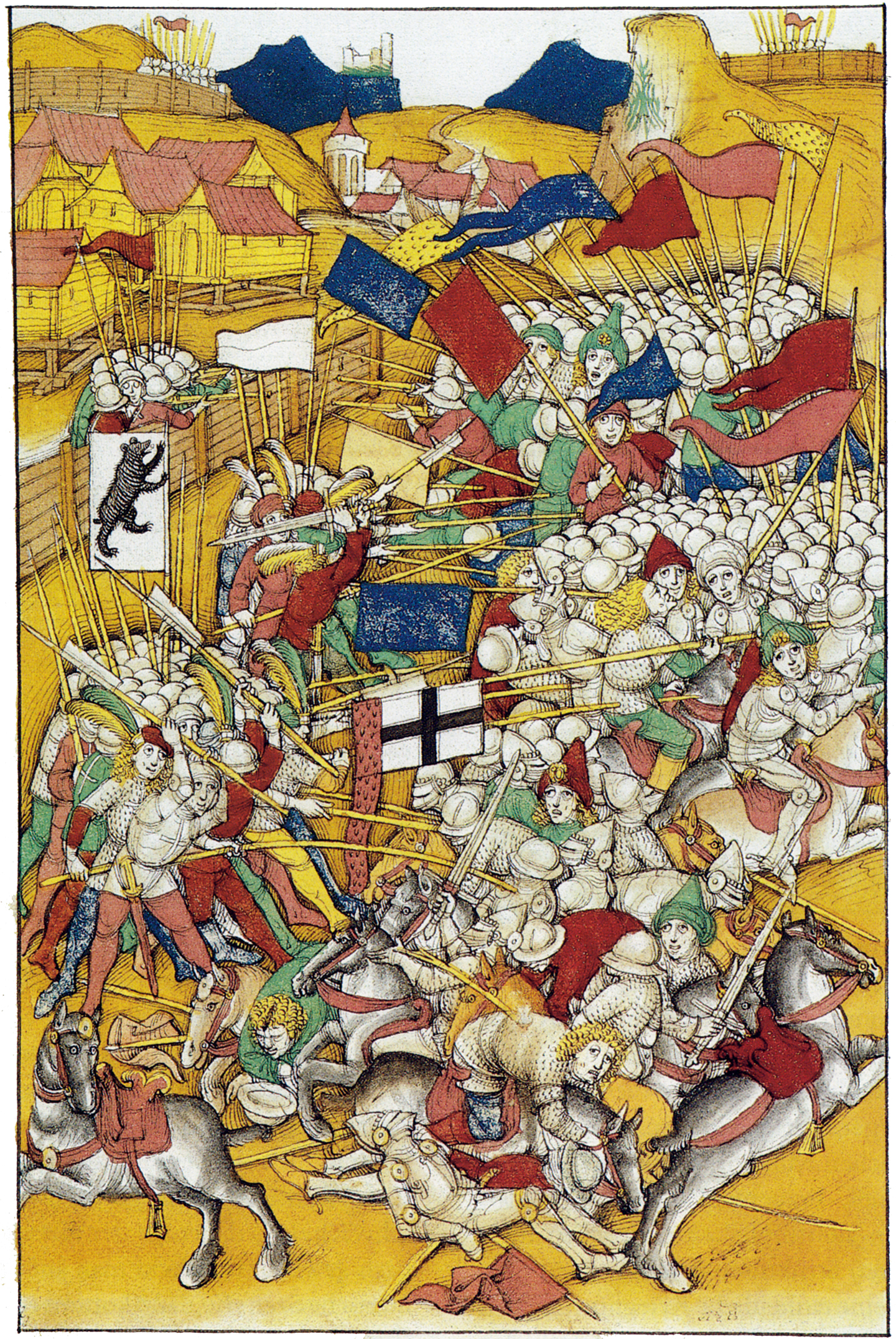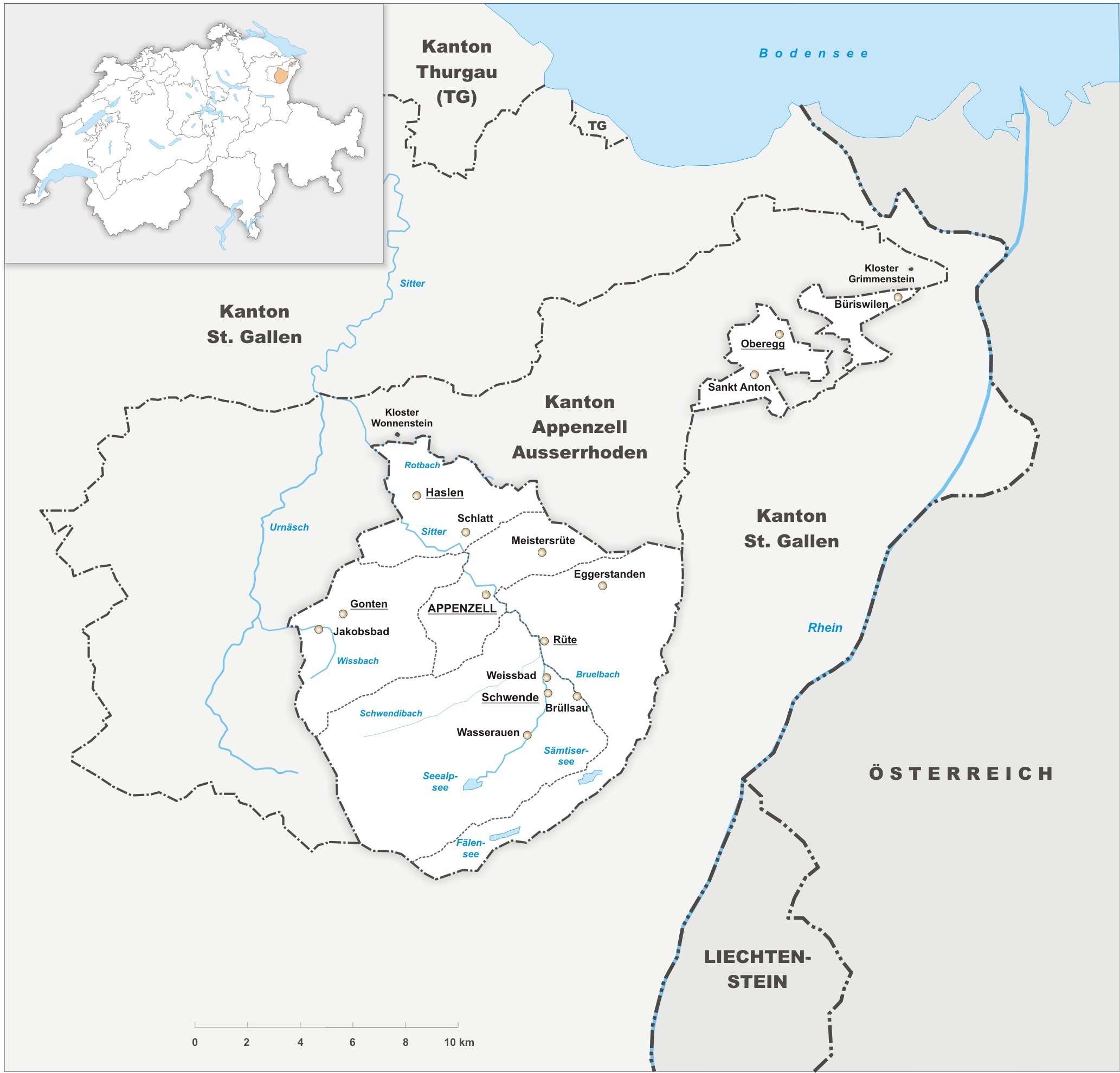|
Zäuerli
Zäuerli is a type of traditional Swiss folk music, common in the Appenzell region of Switzerland. It can be described as 'voiceless yodeling', and is characterised by slower tempo and lower vocal range than in other types of yodeling, making it sound somewhat 'sad'. In popular culture Zäuerli music was part of the soundtrack of the film ''The Grand Budapest Hotel ''The Grand Budapest Hotel'' is a 2014 comedy-drama film written, directed, and co-produced by Wes Anderson. Ralph Fiennes leads a seventeen-actor ensemble cast as Monsieur Gustave H., famed concierge of a twentieth-century mountainside resort ...''. References Appenzell Ausserrhoden Appenzell Innerrhoden Swiss folk music Vocal skills Singing techniques Yodeling {{Music-genre-stub ... [...More Info...] [...Related Items...] OR: [Wikipedia] [Google] [Baidu] |
Appenzell
Appenzell () was a cantons of Switzerland, canton in the northeast of Switzerland, and entirely surrounded by the canton of St. Gallen, in existence from 1403 to 1597. Appenzell became independent of the Abbey of Saint Gall in 1403 and entered a league with the Old Swiss Confederacy in 1411, becoming a full member in 1513. It was partition (politics), divided into Appenzell Innerrhoden and Appenzell Ausserrhoden in 1597 (in a process called the :de:Landteilung_(Appenzell), Landteilung) as a result of the Swiss Reformation. The territory of Appenzell as a geographical entity is known as . While in political contexts, the two cantons (until 1999 half-cantons) are referred to as ('both Appenzells'). History Foundation The name ''Appenzell'' derives from 'cell (i.e., estate) of the abbot'. This refers to the Abbey of St. Gall, which exerted a great influence on the area. By the middle of the 11th century the abbots of St Gall had established their power in the land later calle ... [...More Info...] [...Related Items...] OR: [Wikipedia] [Google] [Baidu] |
Yodeling
Yodeling (also jodeling) is a form of singing which involves repeated and rapid changes of pitch between the low-pitch chest register (or "chest voice") and the high-pitch head register or falsetto. The English word ''yodel'' is derived from the German word ''jodeln'', meaning "to utter the syllable ''jo''" (pronounced "yo"). This vocal technique is used in many cultures worldwide. Recent scientific research concerning yodeling and non-Western cultures suggests that music and speech may have evolved from a common prosodic precursor. Alpine yodeling was a longtime rural tradition in Europe, and became popular in the 1830s as entertainment in theaters and music halls. In Europe, yodeling is still a major feature of folk music (''Volksmusik'') from Switzerland, Austria, and southern Germany and can be heard in many contemporary folk songs, which are also featured on regular TV broadcasts. In the United States, traveling minstrels were yodeling in the 19th century, and, in 1920, ... [...More Info...] [...Related Items...] OR: [Wikipedia] [Google] [Baidu] |
Folk Music
Folk music is a music genre that includes #Traditional folk music, traditional folk music and the Contemporary folk music, contemporary genre that evolved from the former during the 20th-century folk revival. Some types of folk music may be called world music. Traditional folk music has been defined in several ways: as music transmitted orally, music with unknown composers, music that is played on traditional instruments, music about cultural or national identity, music that changes between generations (folk process), music associated with a people's folklore, or music performed by Convention (norm), custom over a long period of time. It has been contrasted with popular music, commercial and art music, classical styles. The term originated in the 19th century, but folk music extends beyond that. Starting in the mid-20th century, a new form of popular folk music evolved from traditional folk music. This process and period is called the (second) folk revival and reached a zenith ... [...More Info...] [...Related Items...] OR: [Wikipedia] [Google] [Baidu] |
Tempo
In musical terminology, tempo (Italian for 'time'; plural 'tempos', or from the Italian plural), measured in beats per minute, is the speed or pace of a given musical composition, composition, and is often also an indication of the composition's character or atmosphere. In classical music, tempo is typically indicated with an instruction at the start of a piece (often using conventional Italian terms) and, if a specific metrical pace is desired, is usually measured in beat (music), beats per minute (bpm or BPM). In modern classical compositions, a "metronome mark" in beats per minute, indicating only measured speed and not any form of expression, may supplement or replace the normal tempo marking, while in modern genres like electronic dance music, tempo will typically simply be stated in bpm. Tempo (the underlying pulse of the music) is one of the three factors that give a piece of music its texture (music), texture. The others are meter (music), meter, which is indicated by a ... [...More Info...] [...Related Items...] OR: [Wikipedia] [Google] [Baidu] |
Vocal Range
Vocal range is the range of pitches that a human voice can phonate. A common application is within the context of singing, where it is used as a defining characteristic for classifying singing voices into voice types. It is also a topic of study within linguistics, phonetics, and speech-language pathology, particularly in relation to the study of tonal languages and certain types of vocal disorders, although it has little practical application in terms of speech. Singing and the definition of vocal range While the broadest definition of "vocal range" is simply the span from the lowest to the highest note a particular voice can produce, this broad definition is often not what is meant when "vocal range" is discussed in the context of singing. Vocal pedagogists tend to define the vocal range as the total span of "musically useful" pitches that a singer can produce. This is because some of the notes a voice can produce may not be considered usable by the singer within performan ... [...More Info...] [...Related Items...] OR: [Wikipedia] [Google] [Baidu] |
The Grand Budapest Hotel
''The Grand Budapest Hotel'' is a 2014 comedy-drama film written, directed, and co-produced by Wes Anderson. Ralph Fiennes leads a seventeen-actor ensemble cast as Monsieur Gustave H., famed concierge of a twentieth-century mountainside resort in the Ruritanian romance, fictional Eastern European country of Zubrowka. When Gustave is framed for the murder of a wealthy dowager (Tilda Swinton), he and his recently befriended protégé Zero (Tony Revolori) embark on a quest for fortune and a priceless Renaissance art, Renaissance painting amidst the backdrop of an encroaching Fascism in Europe, fascist regime. Anderson's American Empirical Pictures produced the film in association with Studio Babelsberg, Searchlight Pictures, Fox Searchlight Pictures, and Indian Paintbrush (company), Indian Paintbrush's Scott Rudin and Steven Rales. Fox Searchlight supervised the commercial distribution, and ''The Grand Budapest Hotel''s funding was sourced through Indian Paintbrush and German gover ... [...More Info...] [...Related Items...] OR: [Wikipedia] [Google] [Baidu] |
Appenzell Ausserrhoden
Canton of Appenzell Ausserrhoden ( ; ; ; ), in English sometimes Appenzell Outer Rhodes, is one of the Canton of Switzerland, 26 cantons forming the Switzerland, Swiss Confederation. It is composed of twenty municipalities. The seat of the government and parliament is Herisau, and the seat of judicial authorities are in Trogen, Switzerland, Trogen. It is traditionally considered a "half-canton", the other half being Appenzell Innerrhoden. Appenzell Ausserrhoden is located in the north east of Switzerland. Together with the canton of Appenzell Innerrhoden, it forms an enclave within the canton of St. Gallen. The canton is essentially located in the Alpine foothills of the Alpstein massif, culminating at the Säntis. Appenzell Ausserrhoden was part of the historical canton of Appenzell, which was divided into Appenzell Innerrhoden (Catholic) and Appenzell Ausserrhoden (Protestant) in 1597 as a result of the Swiss Reformation. History Settlement in Appenzell started in the 7th an ... [...More Info...] [...Related Items...] OR: [Wikipedia] [Google] [Baidu] |
Appenzell Innerrhoden
Canton of Appenzell Innerrhoden ( ; ; ; ), in English sometimes Appenzell Inner-Rhodes, is one of the 26 cantons forming the Swiss Confederation. It is composed of five districts. The seat of the government and parliament is Appenzell. It is traditionally considered a " half-canton", the other half being Appenzell Ausserrhoden. Appenzell Innerrhoden is the smallest canton of Switzerland by population and the second smallest by area. It is located in the northeast of the country. Together with the canton of Appenzell Ausserrhoden, it forms an enclave within the canton of St. Gallen. The canton is essentially located in the Alpine foothills of the Alpstein massif, culminating at the Säntis. Appenzell Innerrhoden was part of the historical canton of Appenzell, which was divided into Appenzell Ausserrhoden (Protestant) and Appenzell Innerrhoden (Catholic) in 1597 as a result of the Swiss Reformation. History Foundation The name ''Appenzell'' () means "cell (i.e., estate) ... [...More Info...] [...Related Items...] OR: [Wikipedia] [Google] [Baidu] |
Swiss Folk Music
Switzerland has long had a distinct cultural identity, despite its diversity of German, French, Italian, Romansh and other ethnicities. Religious and folk music dominated the country until the 17th century, with growth in production of other kinds of music occurring slowly. Classical music Switzerland has produced many esteemed classical composers over the centuries, such as Rennaissance composer Ludwig Senfl, Joachim Raff, Arthur Honegger (who has featured on the Swiss franc note), and Ernest Bloch. Folk music Due to a lack of detailed records, little is known about Swiss folk music prior to the 19th century. Some 16th-century lute tablatures have been reconstructed into authentic instrumental arrangements; however, the first major source of information comes from 19th-century collections of folk songs, and work done by musicologist Hanny Christen. One of the oldest varieties of folk music was the Swiss song Kühreihen, an agricultural Alpine song in the Lydian mode. Tradi ... [...More Info...] [...Related Items...] OR: [Wikipedia] [Google] [Baidu] |
Vocal Skills
The human voice consists of sound made by a human being using the vocal tract, including talking, singing, laughing, crying, screaming, shouting, humming or yelling. The human voice frequency is specifically a part of human sound production in which the vocal folds (vocal cords) are the primary sound source. (Other sound production mechanisms produced from the same general area of the body involve the production of unvoiced consonants, clicks, whistling and whispering.) Generally speaking, the mechanism for generating the human voice can be subdivided into three parts; the lungs, the vocal folds within the larynx (voice box), and the articulators. The lungs, the "pump" must produce adequate airflow and air pressure to vibrate vocal folds. The vocal folds (vocal cords) then vibrate to use airflow from the lungs to create audible pulses that form the laryngeal sound source. The muscles of the larynx adjust the length and tension of the vocal folds to 'fine-tune' pitch and to ... [...More Info...] [...Related Items...] OR: [Wikipedia] [Google] [Baidu] |
Singing Techniques
Singing is the art of creating music with the voice. It is the oldest form of musical expression, and the human voice can be considered the first musical instrument. The definition of singing varies across sources. Some sources define singing as the act of creating musical sounds with the voice. Other common definitions include "the utterance of words or sounds in tuneful succession" or "the production of musical tones by means of the human voice". A person whose profession is singing is called a singer or a vocalist (in jazz or popular music). Singers perform music (arias, recitatives, songs, etc.) that can be sung with or without accompaniment by musical instruments. Singing is often done in an ensemble of musicians, such as a choir. Singers may perform as soloists or accompanied by anything from a single instrument (as in art songs or some jazz styles) up to a symphony orchestra or big band. Many styles of singing exist throughout the world. Singing can be formal or ... [...More Info...] [...Related Items...] OR: [Wikipedia] [Google] [Baidu] |







